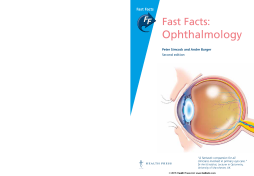
Additional Information
Book Details
Abstract
This fully updated new edition has been designed for ease and speed of use in clinical practice. It will empower you with the knowledge to triage your patients into three main groups: emergencies requiring immediate referral; non-emergencies requiring routine referral; or those with treatable conditions.
Primarily intended for doctors, optometrists, ophthalmic nurses and other health professionals involved with eye care within the community, this refreshingly readable handbook discusses the major ophthalmological symptoms in the context of daily clinical practice.
“This would be a great companion for doctors and nurses in a primary care setting. It would help them to quickly check what they need to assess if a patient presents with an ocular issue, and also which presentations they should be referring to an ophthalmologist. Medical students would find it useful as well. It is well presented and easy to follow.”
Mrs Rupal Lovell-Patel, Course Leader for Optometry & University Teaching Fellow
“An excellent book providing well-summarized and easily accessible information. The key points and sections on referral urgency are particularly useful. An invaluable guide for students and practitioners alike.”
Alice Gravett, Optometry student, Aston University
"a fantastic companion for all clinicians involved in primary eye care. The authors accurately describe a variety of common ophthalmological conditions, which are carefully organized in order of their associated symptoms, allowing the reader to quickly identify the problem, thereby facilitating appropriate referral or management.”
Dr Amit N. Jinabhai, Lecturer in Optometry
“A great practical book for working in the field. ... I particularly liked the opportunity to self-test online”
Pam Armstrong, President
“a very concise and succinct handbook”
Jorune Suipyte, Medical Science Director
“This very well-set-out handbook is ideal for those involved in triaging eye problems, enabling them to decide what to refer to an optometrist or ophthalmologist, and how urgently.”
